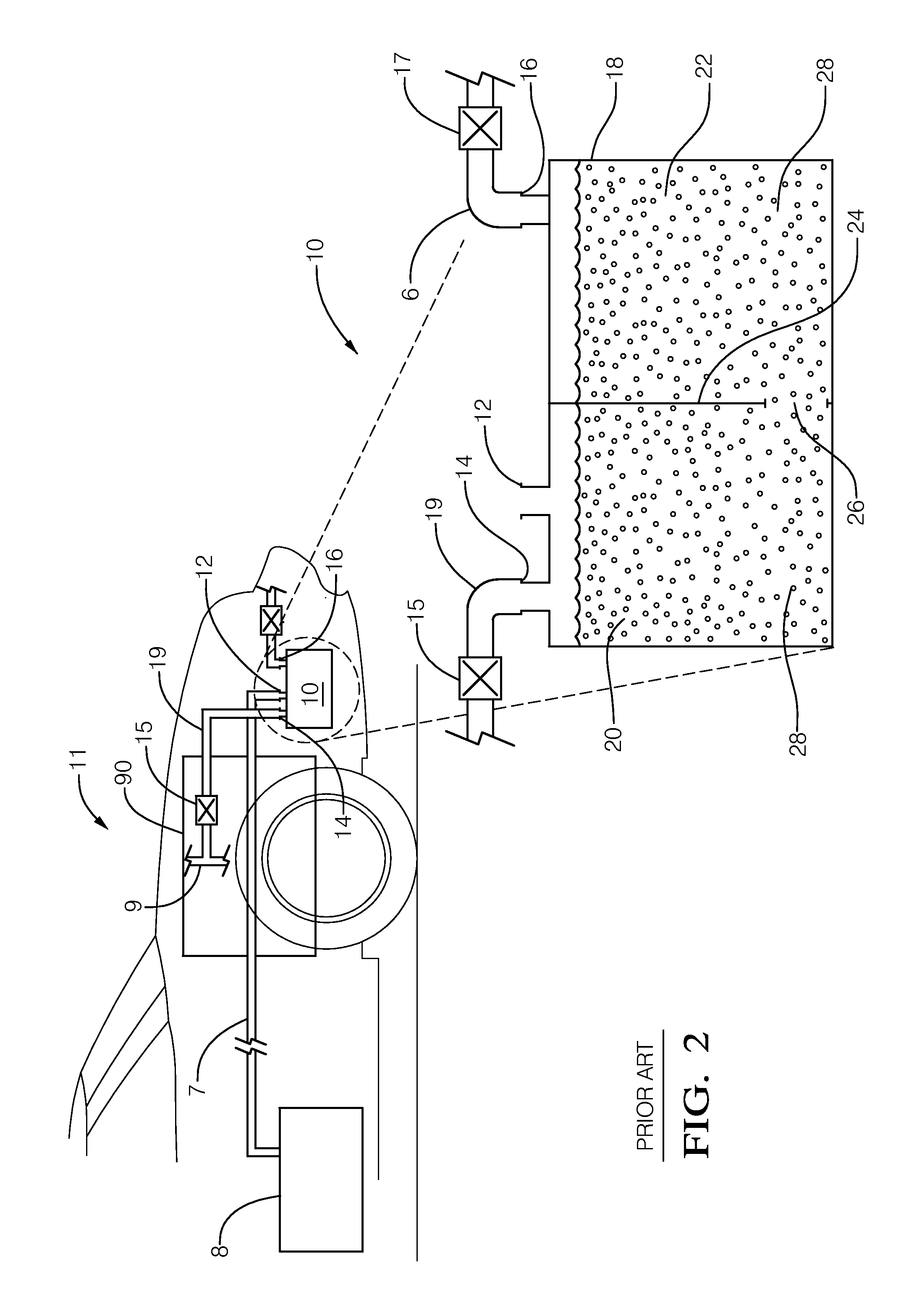Carbon heating element for evaporative emission canister
a technology of evaporative emission and heating element, which is applied in the direction of combustion air/fuel air treatment, machines/engines, manufacturing tools, etc., can solve the problem that fuel vapor is a pollutant, and achieve the effect of reducing the amount of fuel vapor emitted
- Summary
- Abstract
- Description
- Claims
- Application Information
AI Technical Summary
Benefits of technology
Problems solved by technology
Method used
Image
Examples
Embodiment Construction
[0012]FIGS. 1 and 2 illustrate one type of storage canister, generally designated 10, typically used in the automotive industry. FIG. 1 shows the canister in a perspective view, whereas FIG. 2 shows it in cross-section. The storage canister 10 comprises a container 18 that is partially divided by partition 24 into two compartments 20 and 22. An intercompartmental flow passage 26 connects these compartments.
[0013]The storage canister 10 has a tank port 12 and a purge port 14, both of which communicate with the first compartment 20. The tank port 12 connects to the tank tube 7, and thereby allows the air space in the fuel tank 8 to communicate with the first compartment 20. To the left of the tank port 12 as viewed from the perspective of FIG. 2, the purge port 14 connects to a purge line 19. Through a purge valve 15, the purge line 19 connects to the air intake passage 9 of the vehicle 11. (Air flowing into the air intake passage 9 is mixed with fuel, and the mixture eventually drawn...
PUM
| Property | Measurement | Unit |
|---|---|---|
| electrical power | aaaaa | aaaaa |
| temperature | aaaaa | aaaaa |
| pressure | aaaaa | aaaaa |
Abstract
Description
Claims
Application Information
 Login to View More
Login to View More - R&D
- Intellectual Property
- Life Sciences
- Materials
- Tech Scout
- Unparalleled Data Quality
- Higher Quality Content
- 60% Fewer Hallucinations
Browse by: Latest US Patents, China's latest patents, Technical Efficacy Thesaurus, Application Domain, Technology Topic, Popular Technical Reports.
© 2025 PatSnap. All rights reserved.Legal|Privacy policy|Modern Slavery Act Transparency Statement|Sitemap|About US| Contact US: help@patsnap.com



